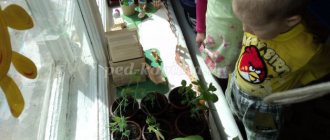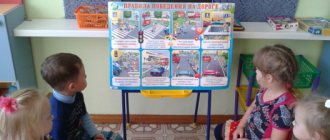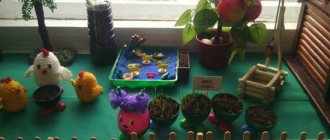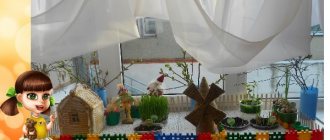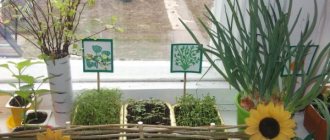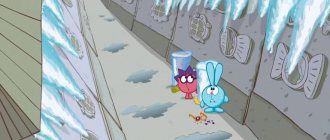Project "Sun" for children 4-6 years old
Relevance:
Summer is a time of warm, sunny days and a favorable time for observing the sun, conducting experiments and experiments with the sun's rays. The Russian people have composed many proverbs and sayings about the sun.
He was compared to his mother: “The sun is like a dear mother and will warm and caress.” It largely determined the way of life of the Russian people: “The sun rises, so the day comes.” The harvest depended on the number of sunny days. “When the sun warms up, everything will be in time.”
Research “What is the sun for?” is designed to help create a positive emotional mood among preschoolers in the summer and unite the children's team.
Objective of the project:
Creating conditions for the development of children's cognitive activity when studying a natural object - the sun.
Tasks:
Educational:
- Contribute to the active acquisition of elementary ideas about the nature of the sun, its influence on the world around us.
- Introduce the rules of safe behavior during the hot season.
- Strengthen the skills of cutting, gluing, drawing with pencils.
- To form the cognitive activity of children when conducting experiments and observations.
- Enrich children's vocabulary on this topic.
Educational:
- Promote the development of cognitive processes and creative abilities of children.
- Encourage children to engage in productive activities on the topic of the project.
- Develop children's coherent speech and fine motor skills.
Educational:
- Cultivate independence, accuracy, perseverance.
- Learn to work in a team, coordinate your actions with each other.
Fundamental question:
What is the sun for?
Specific questions and research topics:
- Why does the sun shine?
- Topic of research: Visiting the sun. What happens if the sun stops shining?
- Research topic: The sun is our friend. When can the sun be dangerous?
- Research topic: Be healthy!
Motivation:
Invite the children to guess the riddle about the sun.
It has risen into the sky, and looks towards us through the window. It gives us light and warmth. Always let it shine... (Sun)
Ask what children want to know about the sun.
Integrated educational areas:
- Cognitive development.
- Speech development.
- Social and communicative development.
- Artistic and aesthetic development.
Forms and methods of work:
- direct educational activities;
- conducting experiments and experiments with solar rays;
- viewing illustrations;
- finger and outdoor games, physical education sessions;
- listening and learning poems, riddles and songs about the sun;
- study of proverbs and sayings about the sun;
- consultations and information corners for parents.
Final event:
- Exhibition of creative works “Radiant Sun”, made by children in kindergarten and at home, together with their parents.
- Watch the video “What is the sun for?”
Expected Result:
Children talk (or answer questions) about the sun and its influence on the world around them. Know the rules of safe behavior in the hot season. They independently conduct experiments and experiments with the sun. They play finger and outdoor games related to the sun. Passionate about creating drawings and sun crafts. They sing a song about the sun and read poetry.
Educational and methodological package with applications:
- Business card of the project.
- GCD notes.
- Card index of finger and outdoor games, physical education minutes.
- Card index of poems and riddles about the sun.
- Card index of proverbs about the sun.
- Card index of experiences and experiments with the sun.
- Information corners for parents.
- Photo library with songs about the sun.
- Illustrative materials.
Hypothesis: The sun is needed to shine and warm. It shines because there is hot lava. If the sun stops shining, it will be dark and cold. The sun can be dangerous. If you fly close to it, you can burn. Chocolate may melt in the sun.
Conclusions:
The Sun is the star closest to us. It looks like a huge fireball. The sun gives light and warmth. It heats the earth, water in rivers, seas and oceans. The speed of sunlight is very fast. Just 8 seconds. At that time, if a rocket flew to the sun, it would take 8 months, and an airplane 20 years. If the sun stops shining, there will be no life on Earth, it will turn into ice. People, animals and plants will die. If a person lives for a long time without sunlight, he may get sick. The sun can be dangerous. If you look at the sun for too long, you can go blind. If you sunbathe for a long time, you can burn and it will hurt. In hot weather, you need to drink more water, wear a Panama hat and try not to go outside in the heat. It is better to sunbathe in the morning and evening.
Results of the work carried out:
Preschoolers are conscious about their health and explain the rules for staying in the sun. They talk about the sun as a natural object, about its influence on the surrounding life. They share their impressions of the experiments carried out. They enthusiastically play outdoor games “Sun-bucket” and “Sunny bunnies”. They sing a song about the sun and read poetry. They draw and sculpt the sun themselves.
Future prospects:
Continue studying the sun as the center of the solar system. Enrich the exhibition “Radiant Sun”
Project “Radiant Sun”
Hardening is useful for all children, especially weakened ones, for whom the type of hardening should be chosen only on the advice of a doctor, gradually and carefully increasing the dosage of the prescribed procedure.
Hardening must be carried out using all available measures in combination. To achieve the effect, it is important that the same technique is repeated more than once. Hardening should be increased gradually. The individual characteristics of the child’s personality and health must be taken into account. And most importantly, hardening should be permanent. It has been scientifically proven that if hardening was carried out for two to three months and then stopped, the result disappears within a month! Therefore, during long breaks in hardening procedures, they begin again from the original temperatures. Hardening means are simple and affordable.
AIR BATHS
In winter, children are hardened at home. The room is ventilated, reducing the air temperature to 19-20°C. Of course, there is no child in the room during ventilation. But immediately after the window is closed, he can return to his place. Of course, the air will seem cooler to him than in the next room, but this is exactly the effect that was needed. Subsequently, it is necessary to increase the ventilation time, bringing the room temperature to 16-17 °C. When entering a ventilated room, the child should not be dressed as if going outside. Let him wear ordinary home clothes.
Children who do not have the habit of hardening or are in poor health are best accustomed to cool air gradually.
In summer, air baths are best done outdoors in the shade of trees or under a canopy, where sunlight is rich in ultraviolet radiation. Unlike apartments, where ultraviolet radiation almost does not penetrate.
RUBBING
After air baths, wet rubbing is even more effective during hardening. It is also carried out with increasing intensity of exposure.
Before starting this procedure, you must consult your doctor and then pre-prepare your child's skin. To do this, you need to rub the child’s body, arms and legs every morning with dry flannel or a piece of soft woolen cloth until pink. After one and a half to two weeks, you can move on to wet rubbing.
In the first one or two days, rubbing is purely symbolic - only the child’s hands and feet are wiped. You need to rub with a towel soaked in water at a temperature of 28 ° C.
Rubbing without changing the temperature is carried out once a day for a week. During this time, the baby gets used to the procedure. The next step is to lower the water temperature a couple of degrees. And so it should be lowered every one or two days. As a result, within a short period of time it is possible to reduce the temperature of the water used to 17-18 °C. During the same period, the area of wiping increases. It is no longer only the arms and legs that participate in hardening, but the whole body. Rubbing the hands and feet is carried out in the same way as a massage - from the fingers to the torso. General wiping takes one to two minutes. After wet wiping, be sure to rub the child with a dry towel. This will warm it up and cause a reaction in the skin vessels. They will expand. The baby will immediately feel a surge of energy. The most important thing is to always listen to your child. If he complains of discomfort, inconvenience, unpleasant sensations, then this is a sign for parents to change tactics. You may need to raise the water temperature a little or lower it every three days.
